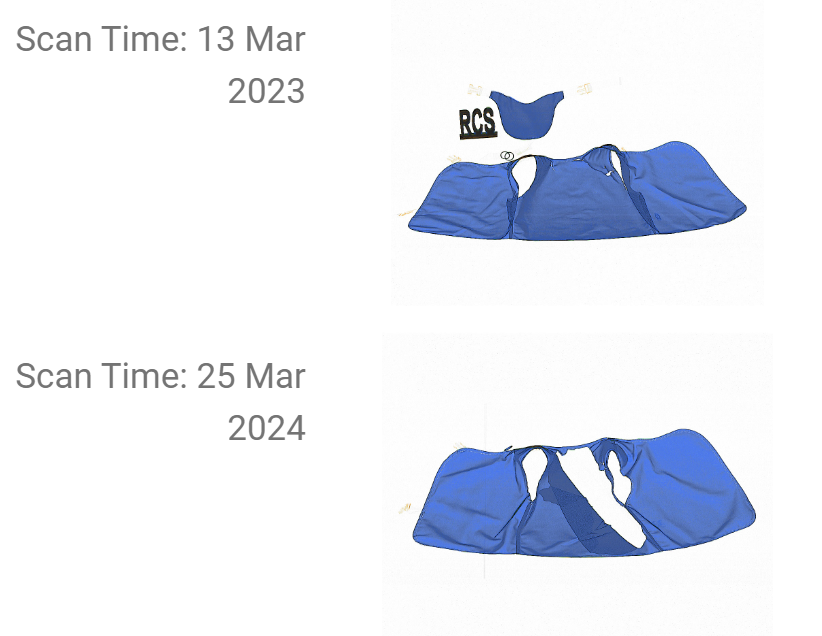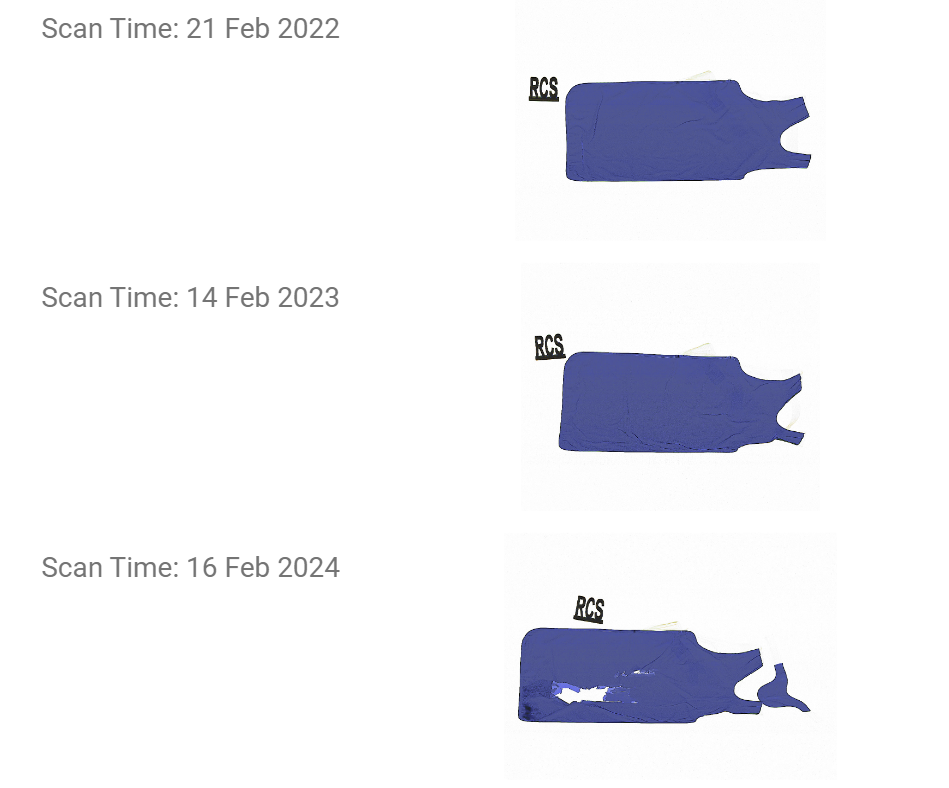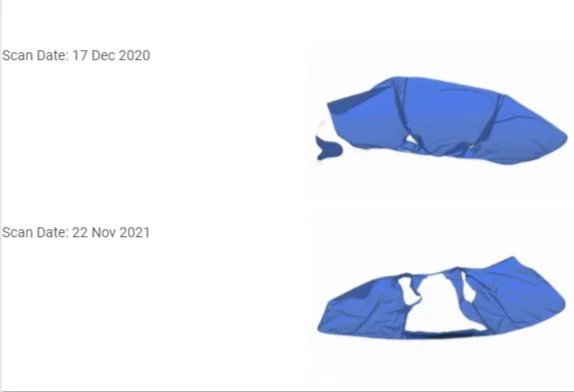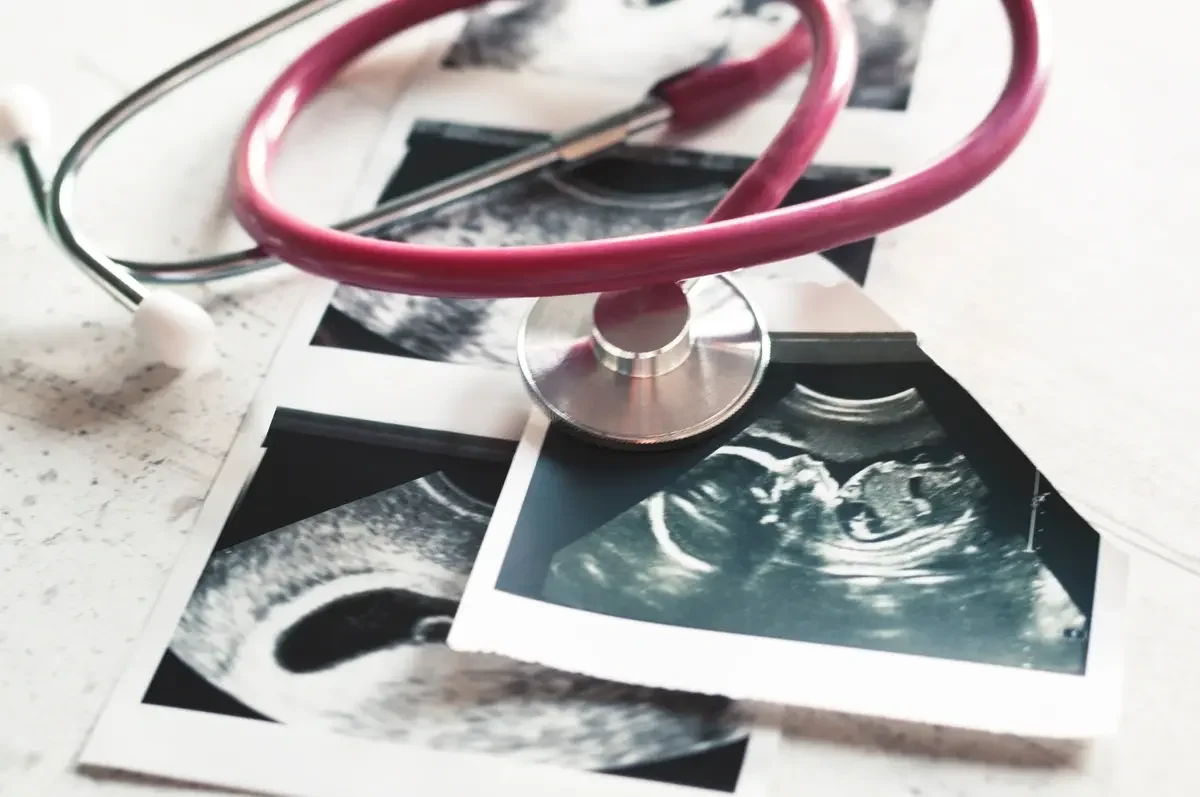How to Manage Your Lead Apron Inventory
Properly managing your lead aprons helps with garment longevity, supports compliance and safety standards, and ensures they adequately protect staff from scatter radiation and HAIs.
However, keeping track of your lead apron inventory can become a low priority when juggling staffing challenges and caring for patients.
Unfortunately, poor lead apron management can cause garments to fall out of compliance with standard protocols, putting patients and staff at risk.
Here are five ways to improve the management of your lead apron inventory for staff safety, compliance, and cost savings.
1. Implement a Centralized Inventory System
Introducing a centralized inventory system consolidates all garment cleaning and inspection records in one location.
Once you record your inventory in your preferred system, you can organize your garments by department, owner, and inspection status. Some inventory systems allow users to set automated reminders for garment inspection and create custom reports for audits and internal reviews.
Several inventory management systems are available on the market, including Apron Hub, Smart Track, and SmartID. Most are created by garment manufacturers.
Unfortunately, these systems are limited in their capabilities and require clinicians to oversee data management, data entry, and upkeep, which is time-consuming.
RCS simplifies inventory management by inputting and maintaining our customers' lead garments and all service records into RADCOMPLY™, our cloud-based platform designed for regulatory compliance.
We update garment details during each service, including adding annual X-ray images, repair data, and cleaning information. We build out and help manage the platform on behalf of our customers and provide support services throughout the year. RCS customers always have access to their RADCOMPLY™ portal to pull data and create reports for audits.
2. Standardize Inspection Procedures
Standard inspection procedures help you stay compliant with regulations and extend the longevity of your lead aprons.
We recommend performing annual X-ray scans for each lead garment, regardless of your state's regulations.
K. Lambert and T. McKeon performed a study to establish stringent rejection criteria for lead aprons. They calculated potential dose increases over two critical organs: the thyroid and gonads.
Their findings suggest aprons should be replaced when:
Defects exceed 15 mm² when over critical organs (thyroid and gonads).
Defects exceed 670 mm² when along the seams, in overlapped areas, or on the back.
Defects exceed 11 mm² for thyroid shields.
You are unlikely to feel an 11 mm² hole in the garment's attenuation when only using visual or palpation tests. An X-ray examination is necessary to ensure the safety of your staff and patients.
RCS provides annual X-ray scans with every service contract. RADCOMPLY™ houses scanned images and keeps them on file from year to year. Images are available via your smartphone by scanning the QR code on the tags we assign to the garments.
Our team identifies garments outside of the recommended rejection criteria. We leave it up to your team to determine whether to keep them in service.
3. Partner With a Professional Cleaning, Sanitization, & Repair Service
Properly managing your lead inventory in-house can be time-consuming and cumbersome. Third-party services can provide peace of mind, save money, and increase the lifespan of your garments.
For example, we conducted a case study at a Midwestern level-one teaching hospital.
They saved $11,100 by partnering with RCS to clean, sanitize, X-ray scan, and repair their 1,347 X-ray garment inventory bi-annually. During their first year, 148 garments needed repairs. The manufacturer's repair cost was $75, but RCS provided the needed repairs for free. Additionally, the facility was able to repair its existing garments rather than replace them with new pieces, which would have cost around ~$500 to replace each garment.
Establishing a suitable cleaning and sanitization area within a hospital and implementing processes to eliminate biofilm and bacteria accumulation is challenging and resource-intensive. A third-party service provider can provide your team with immediate service, typically at a lower cost.
When choosing a provider, ensure they have validated cleaning methods that remove potentially harmful biofilm and bacteria build-up while adhering to best practices and guidelines from the CDC, AORN, and TJC. Also, confirm that they have a quality control program and that garment manufacturing companies or a governing body has vetted or endorsed their work.
4. Optimize Inventory Levels
Knowing exactly how many lead aprons are in your inventory can help you manage them effectively.
Consider the number of staff regularly using lead aprons, the types of procedures performed while the aprons are in use, and the frequency of use. These factors will help you determine when and if aprons need to be repaired or replaced.
5. Start an Apron Disposal and Recycling Program
Establish a safe and responsible disposal program for damaged or unusable lead aprons.
X-ray garments have historically contained heavy metals, including lead. Lead is on the Toxic Substances List under the Environment Protection Act Registry, and it should not be disposed of as conventional garbage but rather as hazardous waste. If disposed of improperly, such materials pose contamination concerns for the environment.
RCS provides an EPA-approved lead garment disposal program that is a quick, easy, and responsible option for retiring your garments. We simplify the process by helping with the logistics.
Benefits of Following These Steps
Enhanced Staff Safety
Keeping track of your lead garment inventory will help reduce the risk of cross-contamination and HAIs.
When your staff sees RCS's garment tags, color indicators, and service records, they will know that their garments are adequately cleaned, sanitized, repaired, and X-rayed. They will understand and appreciate that management has invested in their safety and well-being.
Compliance Assurance
Implementing a centralized inventory management system makes compliance more manageable.
RCS's platform, RADCOMPLY™, makes you feel confident and prepared when auditors enter your building. When meeting with an auditor, you can log into your RADCOMPLY™ account and display dashboards and service records for each garment from every department. You can export data, run reports, and even scan the QR code on the tag to show complete compliance data and scanned garment images from your phone if you're not at your desk.
This level of visibility and organization consistently helps our customers receive best practice recognition during their audits.
Cost Savings
Streamlining your inventory management and inspection processes will extend the lifespan of aprons. It will also help you plan for garment replacement costs and avoid unnecessary replacements.
RCS enables you to take better care of your current inventory, so you don't have to buy as many new pieces down the road.
Simplify Your Inventory Management with RCS
RCS will remove the headache of managing your lead garment inventory with our full-service platform.
During each service, our team will manage and update your inventory data in RADCOMPLY™, our proprietary garment compliance platform. We will also provide cleaning, sanitization, and repairs.
Our customers receive best practice remarks from The Joint Commission and state boards of health and report greatly improved staff satisfaction.







